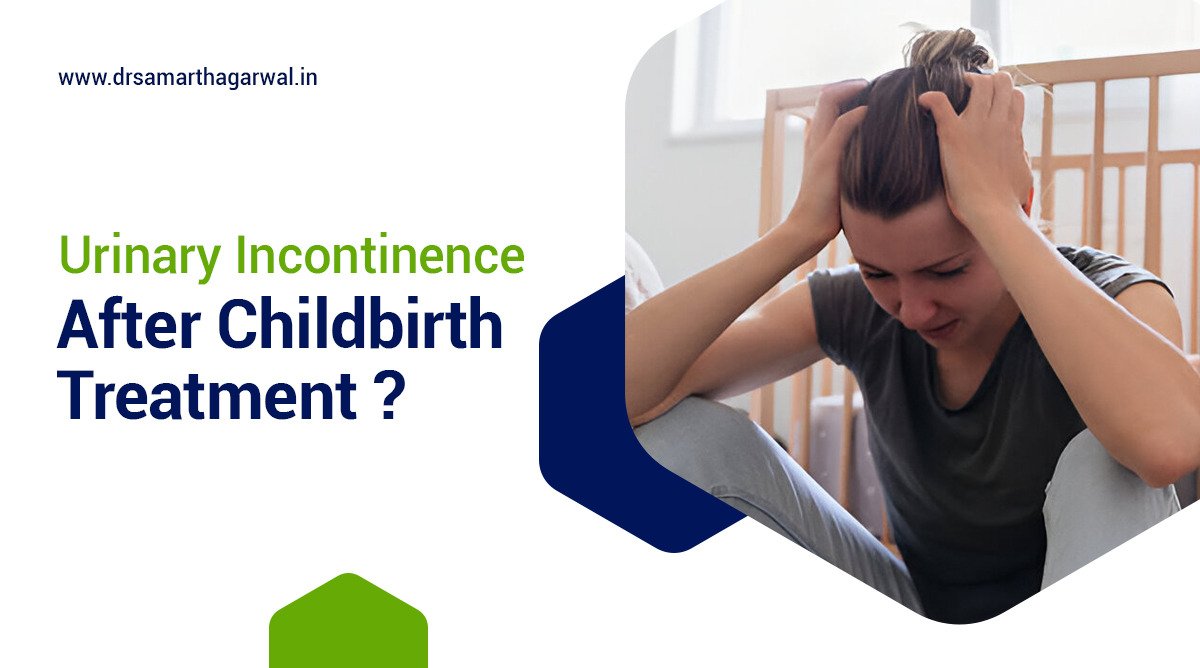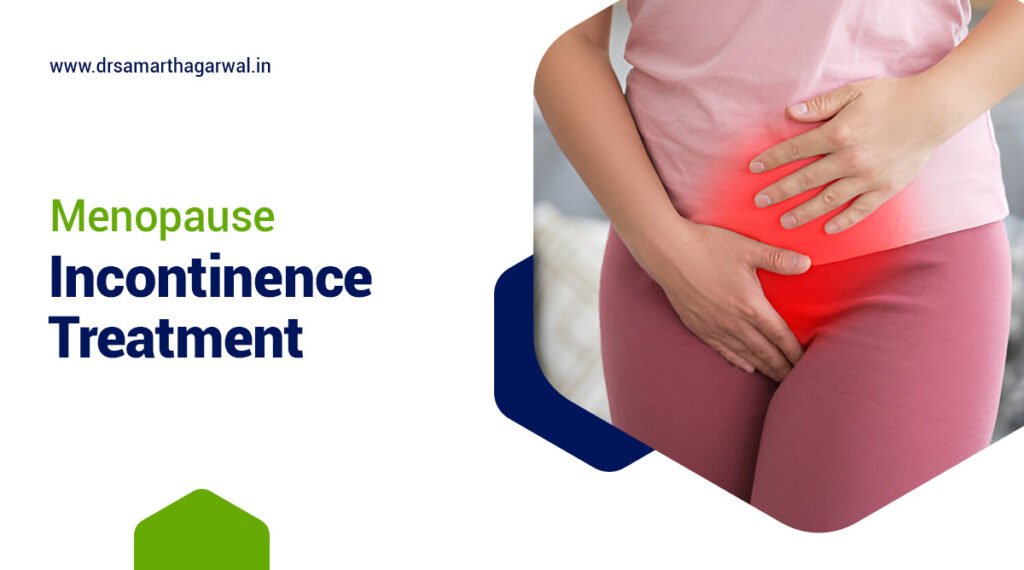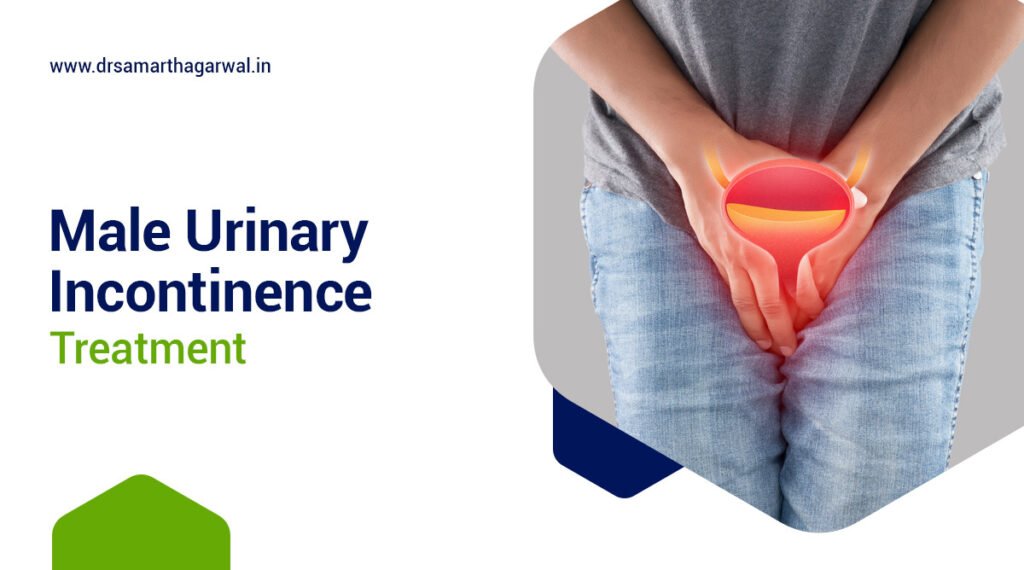Childbirth is a transformative experience; however, for many women, it can also present unexpected challenges, one of which is postpartum incontinence, including urinary incontinence. This condition can significantly affect an individual’s quality of life, often resulting in feelings of embarrassment, anxiety, and social withdrawal. It is essential for affected individuals to understand the causes, symptoms, and available treatments associated with this condition, including the role of the pelvic floor and bladder sphincter. This article examines urinary incontinence following childbirth, providing insights into diagnosis, treatment options, and preventive measures, including behavioral methods and physical therapy. The goal is to equip readers with the knowledge necessary to effectively manage this common postnatal issue.
What is Urinary Incontinence after Childbirth?
Urinary incontinence after childbirth is a prevalent condition affecting many women, often characterized by involuntary urination or urinary leakage, which can occur due to various physical changes during and after pregnancy, including pregnancy incontinence. This condition can significantly impact a woman’s quality of life, making it crucial to understand its underlying causes, symptoms, and potential treatment options.
The postpartum period may exacerbate urinary incontinence due to factors such as hormonal changes, pelvic floor dysfunction, and delivery methods like episiotomy or cesarean delivery, as well as the potential for pelvic organ prolapse.
What are the Causes of Urinary Incontinence after Childbirth?
The causes of urinary incontinence after childbirth are multifaceted, often resulting from a combination of physiological and hormonal changes that occur during pregnancy and delivery. Factors such as a weakened pelvic floor, the impact of childbirth complications, and the risks associated with episiotomy can lead to decreased bladder control and urinary leakage, often requiring assessment by a pelvic health specialist. A woman’s body mass index (BMI) and the method of delivery, whether vaginal or cesarean, can also play a significant role in the development of this condition, potentially requiring consultation with a health care professional.
The interplay of hormones during pregnancy plays a pivotal role in the health of pelvic structures, affecting muscle tone and tissue elasticity. Many women experience stress incontinence, a condition characterized by involuntary leakage during activities that increase abdominal pressure, such as sneezing or exercise. This is often aggravated by the stretching of pelvic muscles during childbirth. In contrast, others may contend with an overactive bladder, which manifests as a frequent and urgent need to urinate, potentially linked to hormonal fluctuations.
- Hormonal Changes: Estrogen levels drop post-delivery, impacting muscle recovery.
- Pelvic Floor Weakness: Prolonged labor or assisted births can weaken pelvic support.
- Body Weight: Higher BMI is associated with increased bladder pressure.
Addressing these conditions often involves a tailored management plan to strengthen the pelvic floor, control weight, and restore hormonal balance.
What are the Symptoms of Urinary Incontinence after Childbirth?
Symptoms of urinary incontinence after childbirth can vary widely, with many women experiencing different degrees of urinary leakage, involuntary urination, or a sudden, overwhelming urge to urinate, often linked to stress incontinence or an overactive bladder, sometimes requiring bladder training techniques. These symptoms can manifest during physical activities, such as coughing, sneezing, or exercising, and may lead to emotional distress and social withdrawal. Recognizing these symptoms is essential for seeking appropriate treatment and support, including advice from a health care professional.
In terms of urinary incontinence, it is crucial to understand the distinctions between stress incontinence and overactive bladder, as the symptoms can significantly impact a person’s daily life and mental well-being.
- Stress incontinence often occurs during activities that put pressure on the bladder, resulting in unexpected leakage during actions like laughing or lifting.
- On the other hand, an overactive bladder is characterized by frequent, uncontrollable urges to urinate, sometimes leading to episodes of involuntary urination.
Both conditions can lead to feelings of embarrassment, anxiety, and isolation, making it difficult for individuals to engage in social gatherings or exercise routines.
Addressing these symptoms promptly is vital for restoring confidence and improving quality of life.
How is Urinary Incontinence after Childbirth Diagnosed?
Diagnosing urinary incontinence after childbirth typically involves a comprehensive evaluation by a healthcare professional, including a detailed medical history and a thorough physical examination to assess pelvic health and bladder function, sometimes involving the expertise of a pelvic health specialist. This may involve discussions about the patient’s symptoms, the impact of childbirth on their body, and any related factors, such as body mass index (BMI) and lifestyle habits, to tailor a suitable treatment plan. Diagnostic tools like bladder training techniques and voiding techniques may also be employed to help understand the condition better.
Along with initial assessments, a tailored diagnosis often encompasses several key steps:
- Assessment Types: Healthcare professionals may use various assessment types, such as bladder diaries, which track fluid intake and urinary frequency.
- Urodynamic Testing: This testing helps to evaluate bladder pressure, capacity, and the function of the urinary sphincter.
- Physical Examination: A thorough pelvic examination assesses muscle strength and any signs of prolapse.
By carefully considering each patient’s individual circumstances, healthcare providers can develop a more accurate diagnosis and recommend effective interventions tailored to their specific needs.
What are the Treatment Options for Urinary Incontinence after Childbirth?
Treatment options for urinary incontinence after childbirth can vary depending on the severity of the condition and individual patient needs, ranging from behavioral methods to more invasive approaches.
Common strategies include:
- Pelvic floor muscle exercises, such as Kegel exercises, which strengthen the pelvic floor and improve bladder control,
- Bladder training techniques designed to retrain the bladder for better function.
In some cases, medications, electrical stimulation, or surgical interventions may be considered to provide effective relief from urinary leakage.
Medications
Medications for urinary incontinence primarily aim to alleviate symptoms associated with overactive bladder, providing relief for many women after childbirth. Health care professionals may prescribe anticholinergic medications to help reduce urinary urgency and frequency, thus improving overall bladder control. These medications can be an effective part of a comprehensive management plan tailored to an individual’s needs.
Along with anticholinergics, a variety of other treatment options exist. Beta-3 agonists, for example, can enhance bladder capacity, while certain antidepressants may help with urgency. Each medication type has its own benefits and potential side effects, making it crucial for healthcare providers to monitor patients closely.
- Anticholinergics: Common side effects include dry mouth, constipation, and dizziness.
- Beta-3 agonists: Possible side effects can involve hypertension and urinary retention.
- Antidepressants: Side effects might include tiredness and nausea.
By conducting a thorough assessment of individual symptoms and broader health conditions, healthcare professionals, such as Dr. Samarth Agarwal from Siliguri, play an essential role in determining the most appropriate medication, ensuring that the treatment aligns with the patient’s specific needs and maximizes benefits while minimizing adverse effects.
Pelvic Floor Muscle Exercises
Pelvic floor muscle exercises, including Kegel exercises, are often recommended for women experiencing urinary incontinence after childbirth as they help strengthen the pelvic muscles and improve bladder control, reducing the risk of pelvic organ prolapse.
Incorporating these exercises into a daily routine can significantly enhance one’s quality of life, particularly for those who have recently given birth. Practicing them consistently is essential; even short sessions can yield remarkable benefits.
Correctly performed Kegel exercises involve identifying the right muscles, typically by trying to stop the flow of urine midstream, which can help ensure that the correct muscles are targeted. Following this, tightening the pelvic floor muscles for a count of three, then relaxing for a count of three is recommended. Aim for three sets of 10 repetitions each day.
- This approach not only supports bladder control but also plays a crucial role in rehabilitation.
- Improved muscle strength can lead to better recovery experiences, enhancing both emotional and physical well-being.
Bladder Training
Bladder training is a behavioral method designed to help individuals manage urinary incontinence by gradually increasing the time between voiding, ultimately improving bladder control and reducing episodes of leakage, often involving specific voiding techniques. This technique involves a structured schedule for urination, which can assist in coordinating bladder function effectively over time. Incorporating voiding techniques into daily routines enhances success in bladder training programs.
The primary goal of this approach is to teach the bladder to hold urine for longer periods while minimizing the urge to urinate.
- The process begins with identifying current voiding habits, which allows for the establishment of personalized targets.
- Next, a training schedule is implemented, typically starting with intervals of 1 to 2 hours between voids, gradually increasing this time to 3 to 4 hours. Guidance from experienced professionals like Dr. Samarth Agarwal in Siliguri can be invaluable during this phase.
Consistency and patience are crucial for achieving success, and during this period, individuals should also maintain hydration without overwhelming their bladders.
Techniques such as pelvic floor exercises, known as Kegel exercises, play a vital role in strengthening the muscles that support bladder control. Incorporating these techniques into daily life can significantly enhance the effectiveness of bladder training.
Electrical Stimulation
Electrical stimulation is a treatment option for urinary incontinence that uses mild electrical impulses to stimulate the pelvic floor muscles, promoting muscle strength and coordination. This method can be particularly beneficial for those who struggle with performing pelvic floor exercises independently. By enhancing muscle function, electrical stimulation can effectively contribute to improved bladder control and reduction of involuntary urination.
This therapeutic approach involves placing electrodes near the pelvic area, which deliver controlled electrical impulses to activate the targeted muscle groups. Initially, patients undergo a series of sessions under professional supervision, gradually progressing to self-administered treatments at home if recommended.
- Effectiveness: Numerous studies have shown that this technique is effective for stress incontinence, urge incontinence, and mixed incontinence, significantly reducing symptoms for many individuals.
- Contraindications: Those with certain medical conditions, such as pacemakers or implanted defibrillators, should avoid this method, and it is essential to consult a healthcare provider for personalized advice.
The journey towards improved urinary health can be enhanced through this non-invasive treatment, providing hope to many who experience debilitating symptoms.
Surgery
For women with severe urinary incontinence after childbirth who do not find relief through conservative treatments, surgical options may be considered as a last resort. An episiotomy, which is a surgical cut made during childbirth, can also have associated risks that might need surgical intervention later. Surgical procedures can include bladder sling surgery or other methods aimed at correcting pelvic organ prolapse and restoring bladder function. Consulting with a qualified healthcare professional is essential to evaluate the risks and benefits associated with surgical intervention.
For women with severe urinary incontinence after childbirth who do not find relief through conservative treatments, surgical options may be considered as a last resort. Surgical procedures can include bladder sling surgery or other methods aimed at correcting pelvic organ prolapse and restoring bladder function. Consulting with a qualified healthcare professional is essential to evaluate the risks and benefits associated with surgical intervention.
Along with bladder sling surgery, various other surgical techniques are available for addressing urinary incontinence. These options may include:
Issues such as rectum complications due to childbirth might also be considered during surgical evaluations.
- Colposuspension: This procedure lifts the bladder neck to prevent involuntary leakage during physical activity or while sneezing.
- Bulking agents: Injectable substances can be used to enhance tissue volume around the urethra, reducing episodes of incontinence.
- Anterior vaginal repair: This surgery focuses on repairing the anterior wall of the vagina, which can improve support for the bladder.
Each of these methods possesses its own indications, benefits, and potential complications. Complications may range from infection to urinary retention, and it is crucial for women to engage in comprehensive discussions with their healthcare providers to identify the most appropriate intervention based on their unique circumstances.
What are the Factors to Consider when Choosing a Treatment Option?
When choosing a treatment option for urinary incontinence after childbirth, several factors should be considered, including the severity of the condition, individual preferences, and recommendations from a healthcare professional. Lifestyle changes, such as weight management based on body mass index (BMI), can also influence treatment effectiveness. Tailoring an approach to the patient’s unique situation is crucial for achieving optimal outcomes.
Other key considerations include the patient’s medical history, any pre-existing conditions, and the potential impact of treatments on daily life. Healthcare professionals play a vital role in guiding the decision-making process. They should engage in open conversations with patients about their symptoms and available options.
- Assessing personal goals and expected outcomes
- Discussing possible side effects
- Encouraging participation in support groups
By emphasizing individualized care and incorporating lifestyle factors, professionals can help patients make informed choices that align with their needs. Whether it’s surgical interventions, pelvic floor exercises, or lifestyle modifications, a patient-centered approach ensures a path towards better management of urinary incontinence.
How Can Urinary Incontinence after Childbirth be Prevented?
Preventing urinary incontinence after childbirth involves proactive measures, such as performing pelvic floor exercises and understanding the risks associated with childbirth methods. Engaging in Kegel exercises during and after pregnancy can help strengthen the pelvic floor, potentially reducing the likelihood of developing urinary incontinence. Awareness of episiotomy risks and education about childbirth complications and recovery strategies play a significant role in prevention.
Along with pelvic floor exercises, maintaining a healthy lifestyle is crucial for new mothers. This includes:
- Staying hydrated, but managing fluid intake to avoid excessive pressure on the bladder.
- Incorporating a balanced diet rich in fiber to prevent constipation, which can strain pelvic muscles.
- Incorporating regular physical activity that is gentle on the body, such as walking or postpartum yoga.
Seeking professional advice about childbirth options can equip individuals with the knowledge necessary to make informed decisions that align with their health.
Routine check-ups post-delivery provide opportunities to address concerns and reinforce preventative strategies, ensuring better long-term outcomes.
What are the Recommended Lifestyle Changes for Managing Urinary Incontinence after Childbirth?
Making specific lifestyle changes can significantly aid in managing urinary incontinence after childbirth, focusing on improving pelvic health and overall well-being. Modifications may include maintaining a healthy body mass index (BMI), performing regular pelvic floor exercises such as Kegel exercises, and adopting behavioral methods to enhance bladder control.
These changes can lead to improved symptoms and overall quality of life for affected women. Incorporating a balanced diet rich in fiber can help prevent constipation, a common issue that exacerbates incontinence.
- Staying hydrated is essential, but monitoring fluid intake to avoid excessive consumption before outings can further aid management.
- Mindfulness and stress-reduction techniques, such as yoga or meditation, can also positively impact bladder control.
It’s crucial for individuals to engage regularly in these activities while consulting healthcare professionals to tailor approaches specific to their needs. Through consistent practice and professional guidance, individuals can develop a more effective strategy to combat incontinence.
Is urinary incontinence after childbirth a permanent condition?
In most cases, urinary incontinence after childbirth can be effectively managed or resolved with proper treatment. However, it is important to consult with a healthcare professional for an individualized treatment plan and to address any underlying causes or contributing factors.

Contact Dr. Samarth Agarwal if you have any questions or concerns about your Urinary health!






